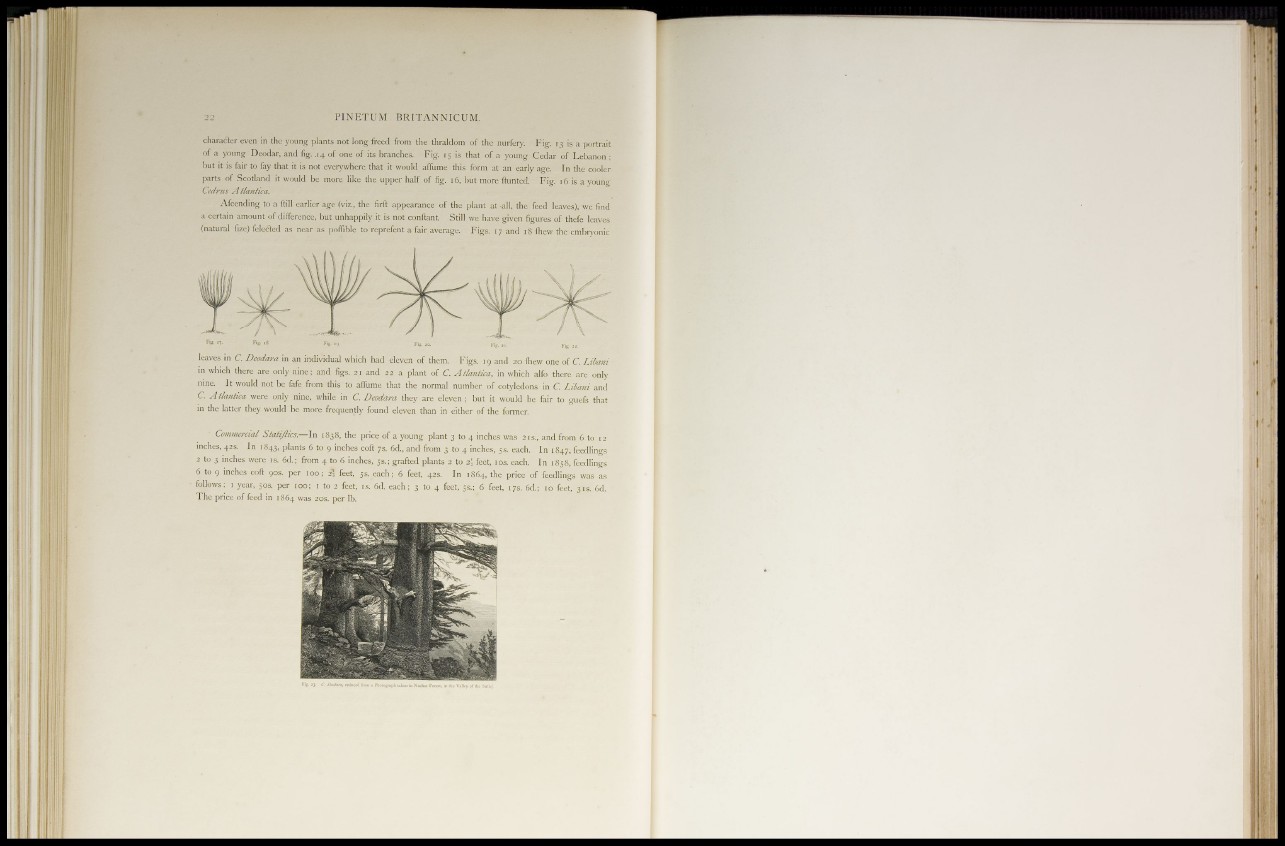
character even in the young plants not long freed from the thraldom of the nurfery. Fig. 13 is a portrait
of a young Deodar, and fig. .14 of one of its branches. Fig. 15 is that of a young Cedar of Lebanon :
but it is fair to fay that it is not everywhere that it would affume this form at an early age. In the cooler
parts of Scotland it would be more like the upper half of fig. 16, but more ftunted. Fig. 16 is a young
Cedrus A tlantica.
Afcending to a ftill earlier age (viz., the firft appearance of the plant at-all, the feed leaves), we find
a certain amount of difference, but unhappily it is not conftant Still we have given figures of thefe leaves
(natural fize) felected as near as poffible to reprefent a fair average. Figs. 17 and iS (hew the embryonic
leaves in C. Deodara in an individual which had eleven of them. Figs. 19 and 20 fiiew one of C. Libani
in which there are only nine; and figs. 21 and 22 a plant of C. A tlantica, in which alfo there are only
nine. It would not be fafe from this to affume that the normal number of cotyledons in C. Libani and
C. A tlantica were only nine, while in C. Deodara they are eleven ; but it would be fair to guefs that
in the latter they would be more frequently found eleven than in either of the former.
Commercial Stati/lics.—ln 1838, the price of a young plant 3 to 4 inches was 21s., and from 6 to 12
inches, 42s. In 1843, plants 6 to 9 inches coft 7s. 6d., and from 3 to 4 inches, 5s. each. In 1847, feedlings
2 to 3 inches were is. 6d.; from 4 to 6 inches, 5s.; grafted plants 2 to 2? feet, 10s. each. In 1858, feedlings
6 to 9 inches coft 90s. per 100; 2? feet, 5s. each; 6 feet, 42s. In 1864, the price of feedlings was as
follows: 1 year, 50s. per 100; 1 to 2 feet, is. 6d. each; 3 to 4 feet, 5s.; 6 feet, 17s. 6d.; 10 feet, 31s. 6d.
The price of feed in 1864 was 20s. per lb.